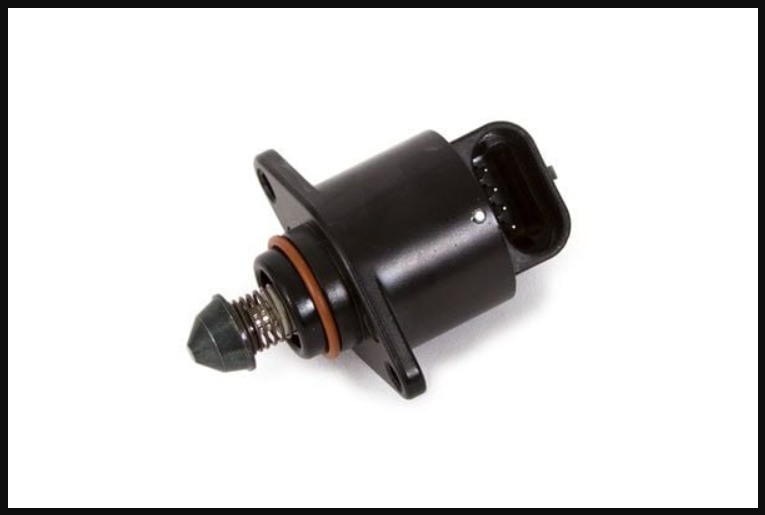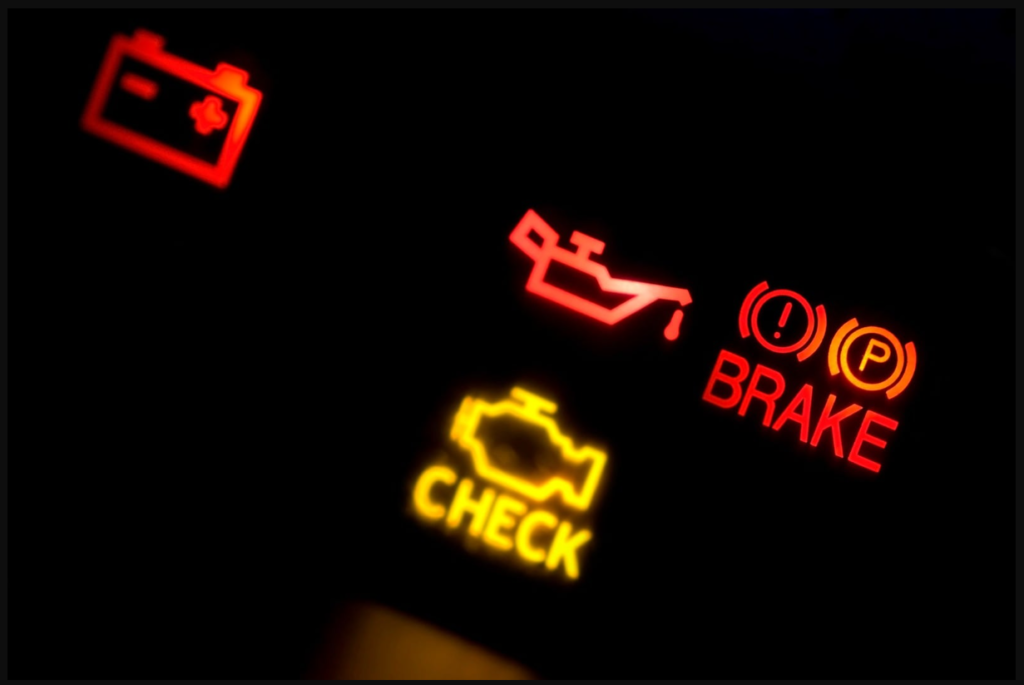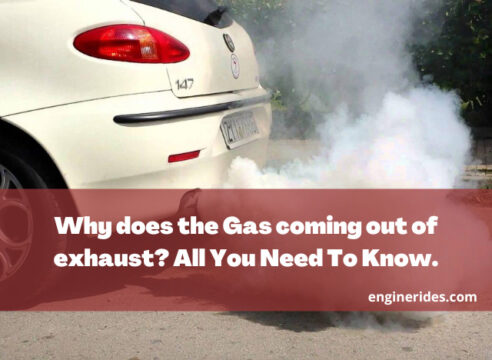What Happens If You Unplug Idle Air Control Valve? Must Read
The IAC valve plays a crucial role in regulating engine idle speed and overall performance. We will answer common questions about this component, including its purpose, what happens when you disconnect it, and whether it’s safe to do so.
We’ll also provide insights into the potential consequences and offer guidance on when, or if, you should consider unplugging the IAC valve in your vehicle.
What is the Idle Air Control (IAC) Valve, and What Does it Do?
The Idle Air Control (IAC) valve is a vital component in your vehicle’s engine control system. Its primary function is to regulate the idle speed of the engine.
When your vehicle is idling, such as when you’re at a stoplight or parked, the IAC valve controls the amount of air that bypasses the closed throttle plate. This allows the engine to maintain a stable and smooth idle speed, ensuring that it doesn’t stall or run too fast.

What are idle air control valve stuck open symptoms?
When the Idle Air Control (IAC) valve in a vehicle becomes stuck open, it can lead to several noticeable symptoms and issues with the engine’s performance. Here are some common symptoms of an IAC valve that is stuck open:
01. High or Fluctuating Idle Speed
One of the most apparent symptoms is an unusually high or erratic idle speed when the vehicle is in neutral or park. The engine may rev excessively, often well above the normal idle speed. This can lead to a rough and unsettling idle.
02. Difficulty in Slowing Down
When coming to a stop, the engine may have difficulty slowing down or may maintain a high idle speed even when you release the throttle. This can make it challenging to bring the vehicle to a complete stop smoothly.
03. Hard Starting
An open IAC valve can affect the air-fuel mixture, making the engine run too lean. This can result in difficulty starting the vehicle, especially when the engine is cold. It may take more cranks or attempts to get the engine running.
How To Reset Idle Air Control Valve? Must Read
ENGINERIDES.COM
04. Poor Fuel Efficiency
A stuck-open IAC valve can disrupt the proper air-fuel mixture, causing the engine to run too lean. As a result, you may experience decreased fuel efficiency and increased fuel consumption.
05. Decreased Engine Performance
The engine may feel underpowered and less responsive to the throttle, particularly when accelerating from a stop or at low speeds. This can lead to sluggish performance and hesitation.
06. Check Engine Light (CEL)
In many cases, a stuck-open IAC valve can trigger the vehicle’s onboard diagnostics system, causing the check engine light (CEL) to illuminate on the dashboard. This light indicates that the engine is not operating within its expected parameters.
It’s important to note that these symptoms can vary depending on the make and model of your vehicle, and ignoring IAC valve issues can lead to poor engine performance and reduced fuel efficiency.
What Happens if You Unplug the Idle Air Control (IAC) Valve?
Unplugging the IAC valve can have various consequences, depending on your vehicle’s make and model, as well as the condition of the engine control system. Here’s what you might experience:
01. Stalling Engine
In most cases, when you unplug the IAC valve, your engine may stall when you release the throttle or come to a stop. This happens because the engine is unable to maintain a stable idle speed without the IAC valve’s control.
02. Rough Idling
Even if your engine doesn’t stall, you may notice a significant increase in rough idling. The engine may sputter or fluctuate in RPM, making it less smooth and less efficient.
03. Poor Performance
Unplugging the IAC valve can lead to decreased engine performance. Your vehicle may have reduced power, hesitation during acceleration, and a generally less responsive throttle.
04. Increased Fuel Consumption
A malfunctioning IAC valve can disrupt the air-fuel mixture, leading to inefficient combustion. This can result in higher fuel consumption and decreased fuel efficiency.
05. Check Engine Light
Disconnecting the IAC valve can trigger the check engine light (CEL) on your dashboard. Modern vehicles are equipped with onboard diagnostics (OBD) that detect irregularities in the engine’s operation.

06. Potential Damage
While unplugging the IAC valve may not cause immediate damage, it can put additional strain on other engine components over time. It’s essential to address the underlying issue rather than simply disconnecting the valve.
How can a car runs better with IAC unplugged?
Unplugging the Idle Air Control (IAC) valve can make a car run better in limited situations where the valve is faulty or stuck closed.
In such cases, unplugging the IAC valve may temporarily improve performance by allowing the engine to rely on a preset throttle stop setting, typically resulting in a higher and more stable idle speed.
However, this is not a recommended long-term solution, as it can lead to other issues, such as poor fuel efficiency, increased emissions, and engine damage.
Is it Safe to Unplug the IAC Valve?
Unplugging the IAC valve should not be a regular or long-term solution. It may be tempting to do so if the valve is malfunctioning and causing issues with your vehicle’s idle speed, but this is not a recommended practice. Here’s why:
01. Engine Damage
Continuously driving with a disconnected IAC valve can lead to engine damage over time. The engine may run too lean or too rich, causing increased wear and tear.
02. Increased Emissions
A malfunctioning IAC valve can also lead to increased emissions, which can be harmful to the environment and may result in your vehicle failing emissions tests.
03. Reduced Safety
Unplugging the IAC valve can compromise vehicle safety, especially if your engine stalls unexpectedly in traffic.
04. Warranty and Repairs
Disconnecting the IAC valve may void your vehicle’s warranty, and it’s not a long-term solution. It’s better to address the underlying issue by having the valve repaired or replaced by a qualified mechanic.
How to bypass the idle air control valve?
Bypassing or disabling the Idle Air Control (IAC) valve in your vehicle is generally not recommended, as it can lead to various performance issues and may even damage your engine over time.
However, if you are troubleshooting a specific issue or planning a temporary solution, here are the steps to bypass the IAC valve:
Please Note – Bypassing the IAC valve should only be considered as a temporary diagnostic measure. It is not a recommended long-term solution, and it may result in poor engine performance, increased emissions, and other issues.
Tools and Materials Needed:-
- Wrench or Socket Set – To disconnect the battery.
- Flathead Screwdriver – For adjusting the throttle stop screw (if necessary).
Steps to Bypass the IAC Valve:-
Step 01. Disconnect the Battery – Begin by disconnecting the negative terminal of the vehicle’s battery. This is an essential safety step to prevent accidental electrical shocks or short circuits.
Step 02. Locate the IAC Valve – The IAC valve is typically located on or near the throttle body of the engine. It is a cylindrical or rectangular component with an electrical connector and hoses or ports for air passage.
Step 03. Disconnect the Electrical Connector – Unplug the electrical connector attached to the IAC valve. This will disable the valve’s ability to receive signals and control the idle speed.
Step 04. Adjust the Throttle Stop Screw (if necessary) – Some vehicles have a throttle stop screw that can be adjusted to control the idle speed manually. If your vehicle has this feature, you can use a flathead screwdriver to adjust the screw to your desired idle speed. Be cautious when making adjustments and consult your vehicle’s manual for specific instructions.
Step 05. Reconnect the Battery – Once you’ve completed the bypass, reconnect the negative terminal of the battery.
Final step. Start the Engine – Start the engine and allow it to run. Keep an eye on the idle speed and adjust the throttle stop screw as needed to achieve a stable idle speed. Be cautious not to set the idle speed too high, as it can lead to other issues.
Important Considerations:-
- Bypassing the IAC valve may result in a higher-than-normal idle speed and may not provide the same level of control and stability as the IAC valve.
- Disabling the IAC valve should only be a temporary measure for diagnostic purposes. It is not a recommended long-term solution, and the underlying issue should be addressed by a qualified mechanic.
- Modern vehicles rely on electronic engine control systems, and bypassing the IAC valve may trigger the check engine light (CEL) or other warning lights on the dashboard.
- If your vehicle’s idle speed remains unstable or exhibits other issues after bypassing the IAC valve, it’s advisable to consult a professional mechanic for a proper diagnosis and repair.
While it is possible to bypass the IAC valve temporarily for diagnostic purposes, it is not recommended as a long-term solution. Proper maintenance and repair of the IAC valve and related components are essential to ensure the smooth operation and performance of your vehicle.
How To Adjust The Idla Air Control Valve? Must Read
ENGINERIDES.COM
Conclusion
In summary, the Idle Air Control (IAC) valve is a critical component of your vehicle’s engine control system, responsible for maintaining a stable idle speed. Unplugging the IAC valve can lead to various consequences, including stalling, rough idling, poor performance, increased fuel consumption, and the potential for engine damage.
It is not recommended to disconnect the IAC valve as a long-term solution. Instead, if you suspect issues with your IAC valve, consult a professional mechanic for proper diagnosis and repair.
Some Related FAQs,
1. Can I unplug the IAC valve temporarily to diagnose a problem?
Yes, you can disconnect the IAC valve temporarily to diagnose a problem. However, it’s crucial to reconnect it afterward and address the underlying issue.
2. How do I know if my IAC valve is malfunctioning?
Common signs of a malfunctioning IAC valve include irregular idle speed, stalling, and rough idling. If you experience these symptoms, have your vehicle inspected by a mechanic.
3. Can I clean the IAC valve instead of replacing it?
Cleaning the IAC valve can sometimes resolve minor issues. However, if the problem persists, it may be necessary to replace the valve.
4. Will unplugging the IAC valve save me fuel?
Unplugging the IAC valve may not significantly affect fuel consumption. It’s more likely to lead to engine performance issues and increased emissions.
5. How much does it cost to replace an IAC valve?
The cost of replacing an IAC valve can vary depending on your vehicle’s make and model. It’s best to consult with a mechanic for an accurate estimate.
Please note that the information provided in this article is for informational purposes only, and it’s essential to consult with a qualified mechanic for specific issues related to your vehicle’s IAC valve.







